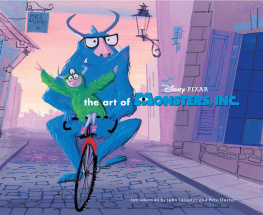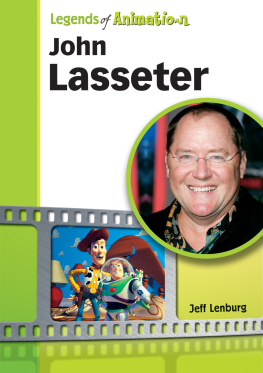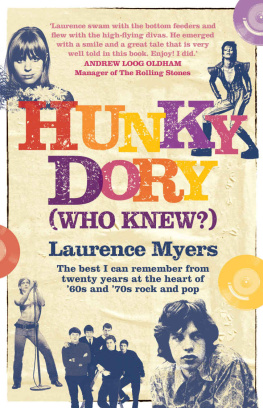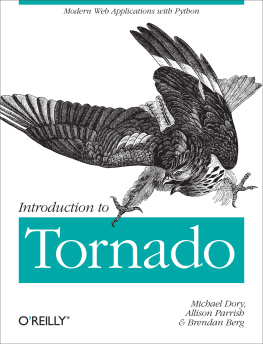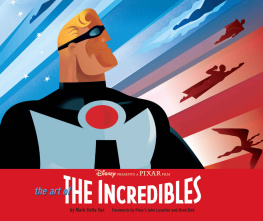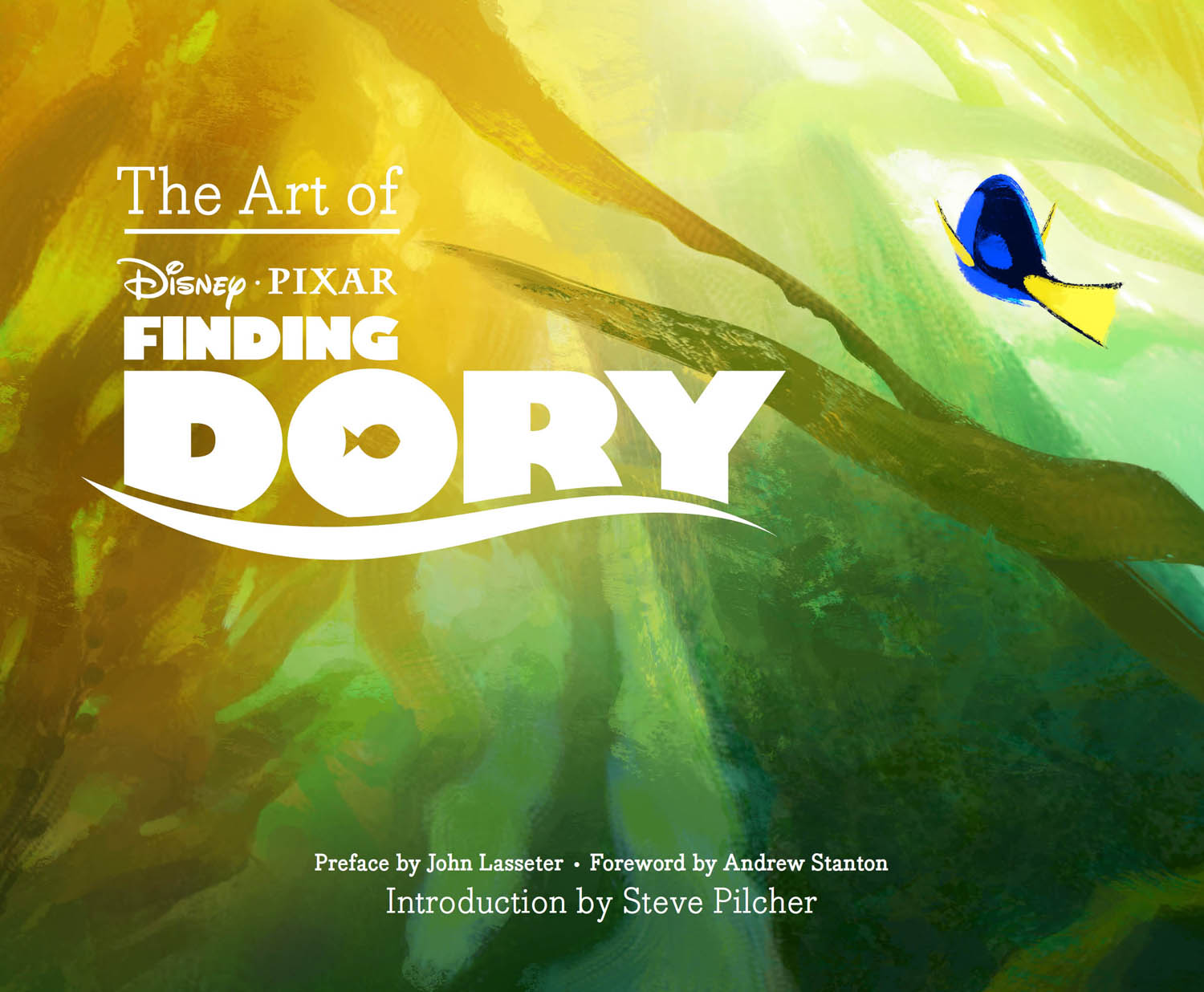


Copyright 2016 Disney Enterprises, Inc. and Pixar Animation Studios.
All rights reserved. No part of this book may be reproduced in any form without written permission from the publisher.
ISBN: 978-1-4521-2224-3 (hc)
ISBN: 978-1-4521-4752-9 (epub, mobi)
Designed by Jessi Rymill
Chronicle Books LLC
680 Second Street
San Francisco, California 94107
www.chroniclebooks.com
: Daniel Lpez Muoz, Digital painting
: Ralph Eggleston, Digital painting
: Tim Evatt, Digital painting
Contents
JOHN LASSETER
ANDREW STANTON
STEVE PILCHER
Preface
JOHN LASSETER

RALPH EGGLESTON Digital painting
I still remember the day that Andrew Stanton pitched me his idea for Finding Nemo.
You had me at the word fish, I told him after hed finished. Sure enough, the final film was everything the pitch had promised and moregripping, funny, emotional, and absolutely beautiful.
The thrill I felt hearing Andrews idea for Finding Dory took me right back to the electric feeling Id gotten from Nemo all those years earlier. I was deeply moved by where hed taken these wonderful characters, and incredibly excited about the new places and personalities we were going to encounter.
Nemo had as its canvas the entire ocean, but Dory expands that world even more, taking us to new places both under waterlike the magnificent California coastline, where swimming in the giant stands of kelp is like flying through an underwater redwood forestand on land, like the Marine Life Institute, where even the plainest quarantine tank is lit by intricate caustics of light playing along its walls and floors.
Along the way, we also meet amazing new forms of aquatic life, from curmudgeonly Hank the octopus (perhaps the biggest challenge our animators have ever faced) to the wonderfully appealing and funny Destiny the whale shark and Bailey the beluga. Watching the many new places and characters evolve in the hands of the films talented artists was one of the biggest pleasures of working on this film.
Its been so exciting to get back underwater and swim with Dory, Nemo, Marlin, and all our friends again. Andrew and his team have made this world bigger, deeper, and richer in every way.
Foreword
ANDREW STANTON

DANIEL LPEZ MUOZ Digital painting
Dory was lost. Most people overlook that fact about the little Blue Tang that swam into their hearts in the original film Finding Nemo. Everyone remembers that fateful moment when a desperate clownfish father, Marlin, went charging out into the vast ocean to find his son, Nemo, and bumped into this forgetful fish who was so eager to help him, but then they tend to simply laugh off her quick aside, My family... where are they? In truth, there was a lot more implied behind that statement.
You see, Dory was looking for her family, too, only she had forgotten that fact. Dory had been lost for years, not knowing where or when that tragic separation occurred. Ive always wanted to believe every audience member sensed that longing in herthat a fish with short-term memory loss, wandering the ocean alone, couldnt truly be happy, that she must be lost from somewhere and missing someone. Its why, even though she never expressed being lonely throughout the movie, no one was surprised when she broke down the moment Marlin left her, and said those indelible words, When I look at you... Im home. I think, unconsciously, we all understood that Dory was a lost and lonely soul. This was the reason whynearly a decade laterI was compelled to return to the ocean and address this issue. Dory somehow lost her family once, and after having found a new one, I just knew, deep down, she was afraid shed eventually lose them as well. I felt Dory deserved to never be lost again... and that only she could make that change happen for herself.
This is why we went back to tell more.
So these images you are about to take in are all working off the issues of Dorys journeyor as the Marine Life Institute motto proclaims, Rescue, rehabilitation, and release. Some of the art addresses the loneliness head on, while other images concern locations and characters that are part of her past, the family she never knew, as well as the future, the larger family she will inherit, all because a little forgetful blue fish conquered her perceived incapacity, fully embraced her instincts, and discovered a deeper level of self-reliance. Theres a saying, It takes a village, but in our case it took an aquarium, a quarantine, California coastal sea life, and the entire ocean to get there.
I want to thank all the incredible artists who helped to conceive, build, and present this story to the world. To get a second chance to dip back into the sea and visually find a way not to repeat ourselves was a thrill, a challenge, and such an honor. For me, Pixar is not a brand, its a specific group of artists, each with a name, a personality, a talent, and a unique point of view who, when they collaborate, make something wondrous. Im proud that youll get to meet many of them in these pages. This movie exists because of them, and its because of them Dory was found.
Introduction
STEVE PILCHER

STEVE PILCHER Pencil and marker
Finding Nemo was a beautiful film, as well as a very difficult film to design and create. One would think a sequel would be easierit wasnt.
Finding Nemo has been immortalized in its success and it carries expectations that have to be respected and celebrated. To harmonize, and in some cases recreate the look of that film, as well as introduce the audience to new locations and characters was, to say the least, challenging. Finding Dory had to do this and somehow deliver even morea gripping story, original characters, laughter, and tension. In essence, a whole new adventure in a world that needed to feel familiar, and yet fresh and different at the same time.
We had to incorporate what appeared on the surface to be straightforward design conceits from the first film, but that we soon discovered were much more complex. The way shapes, color, and light worked together to support the intent and focus of a shot became a carefully coordinated balance from sequence to sequence, shot to shot. The technological advances alone had evolved so much since Finding Nemo was made that you couldnt simply duplicate the same results. Our work was cut out for us as we ventured into new learning curves armed with new ideas, tools, and visions.
Our core art team analyzed and referenced Finding Nemo while researching new material. We visited various large aquariums across the country, observing their exhibits, aquatic tanks, and the way their world worked behind the scenes. We studied the effects of refraction and reflection under water, shallow and deep, using cameras mounted on poles.
Next page

